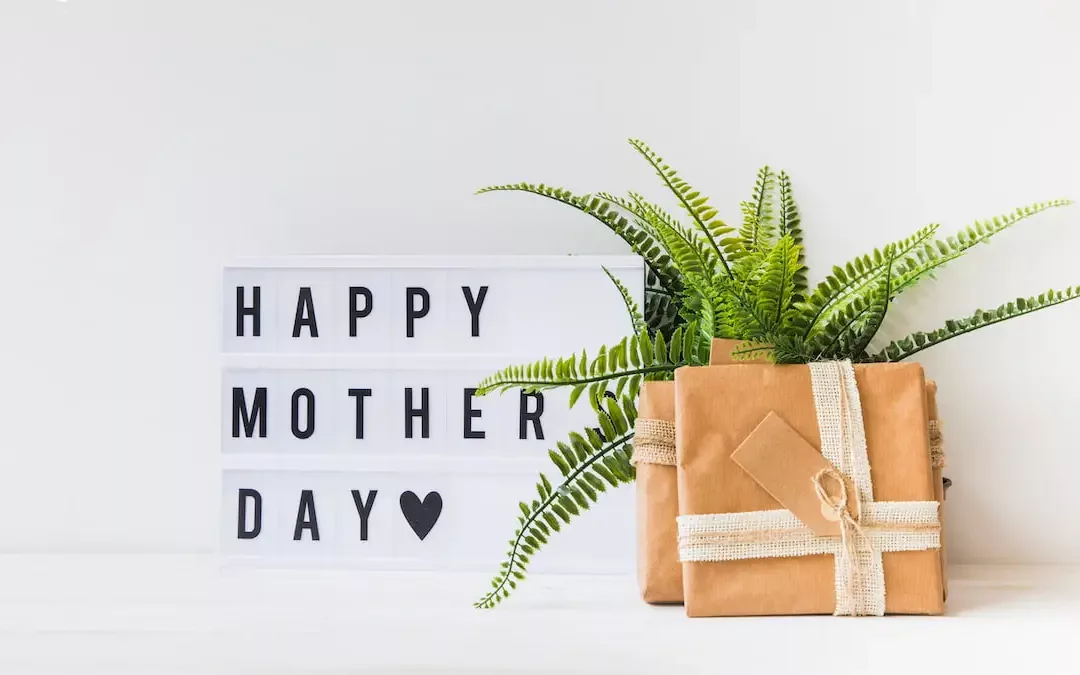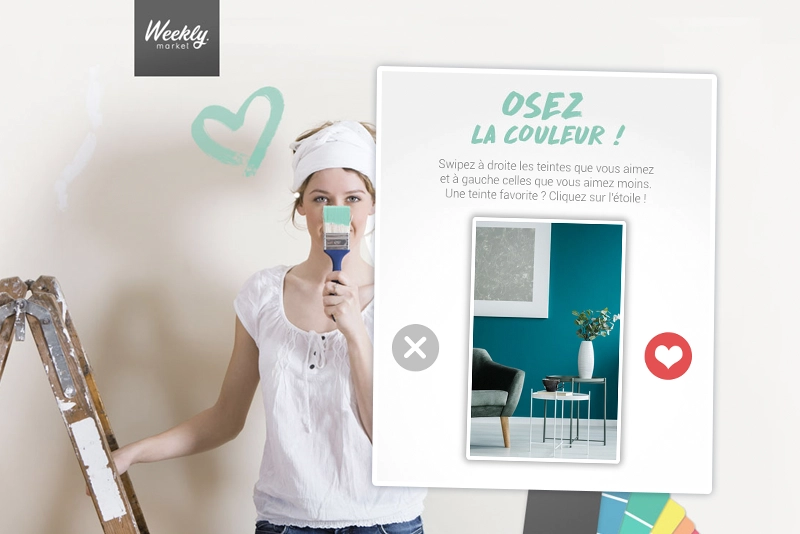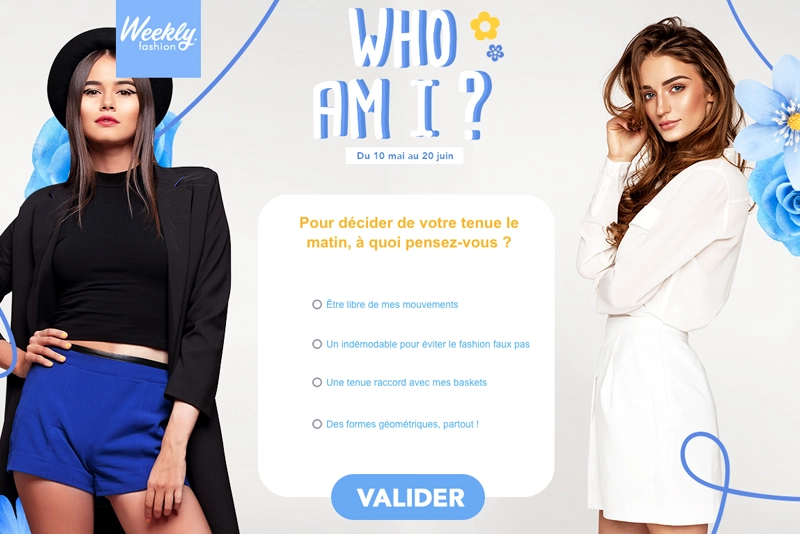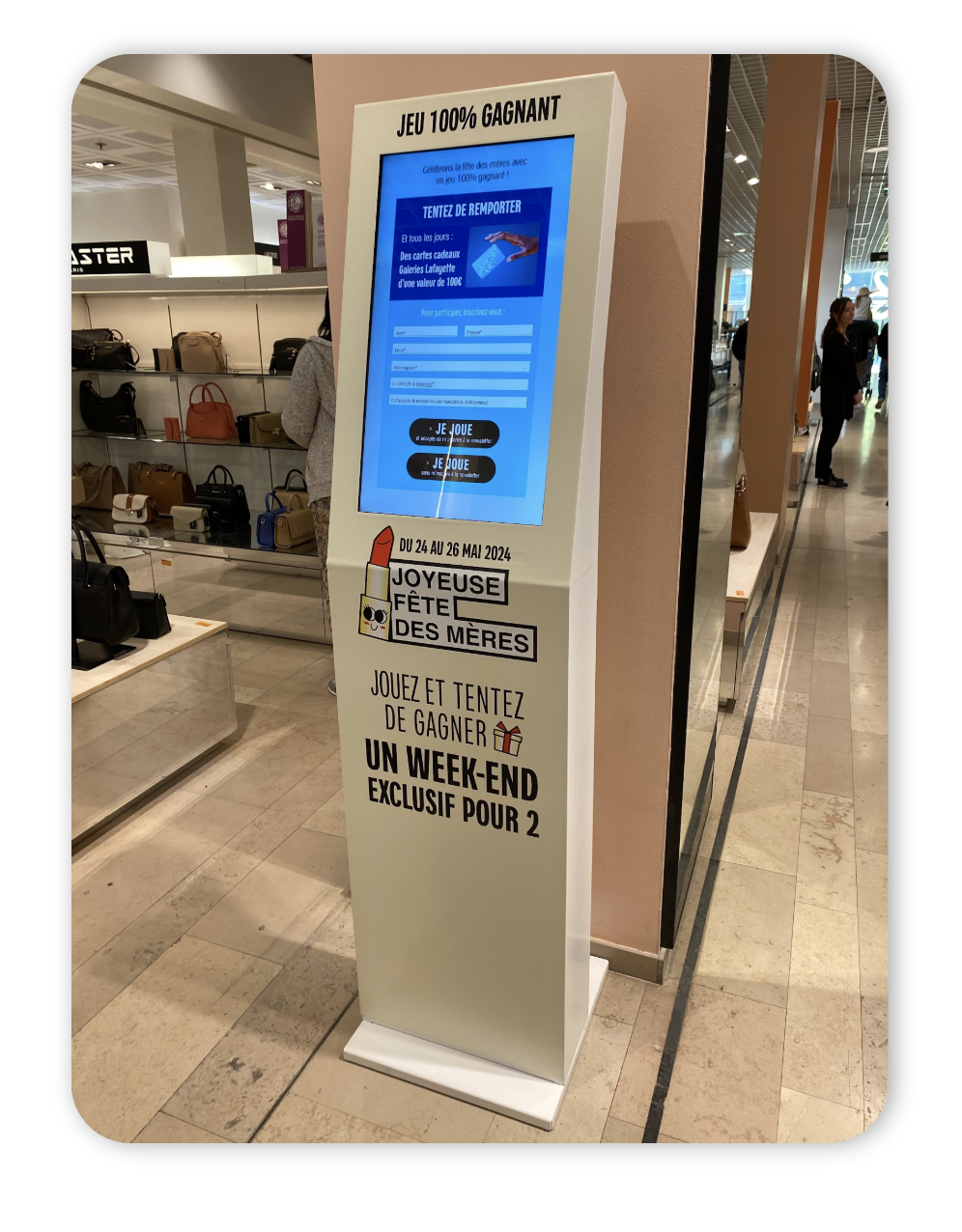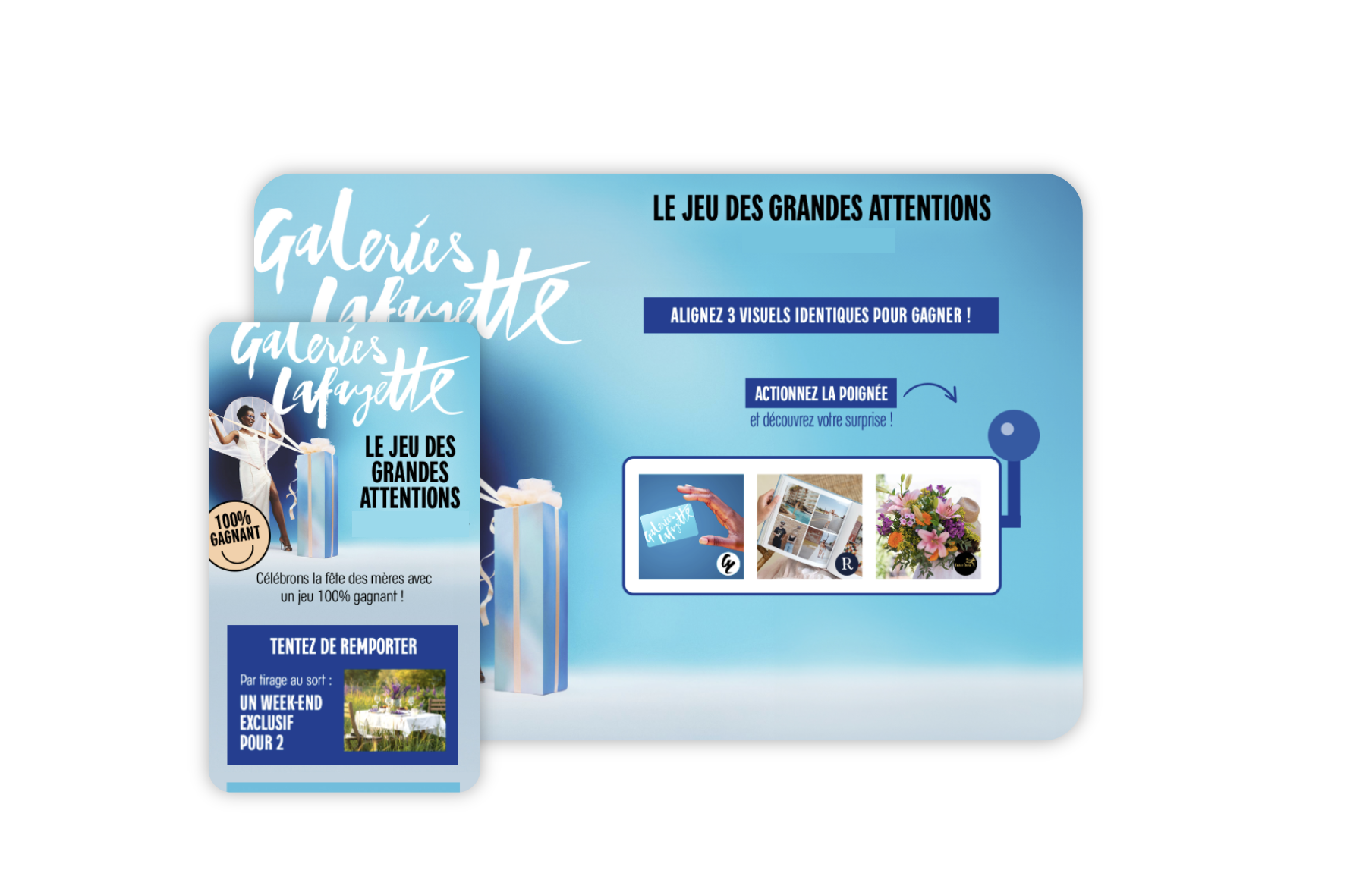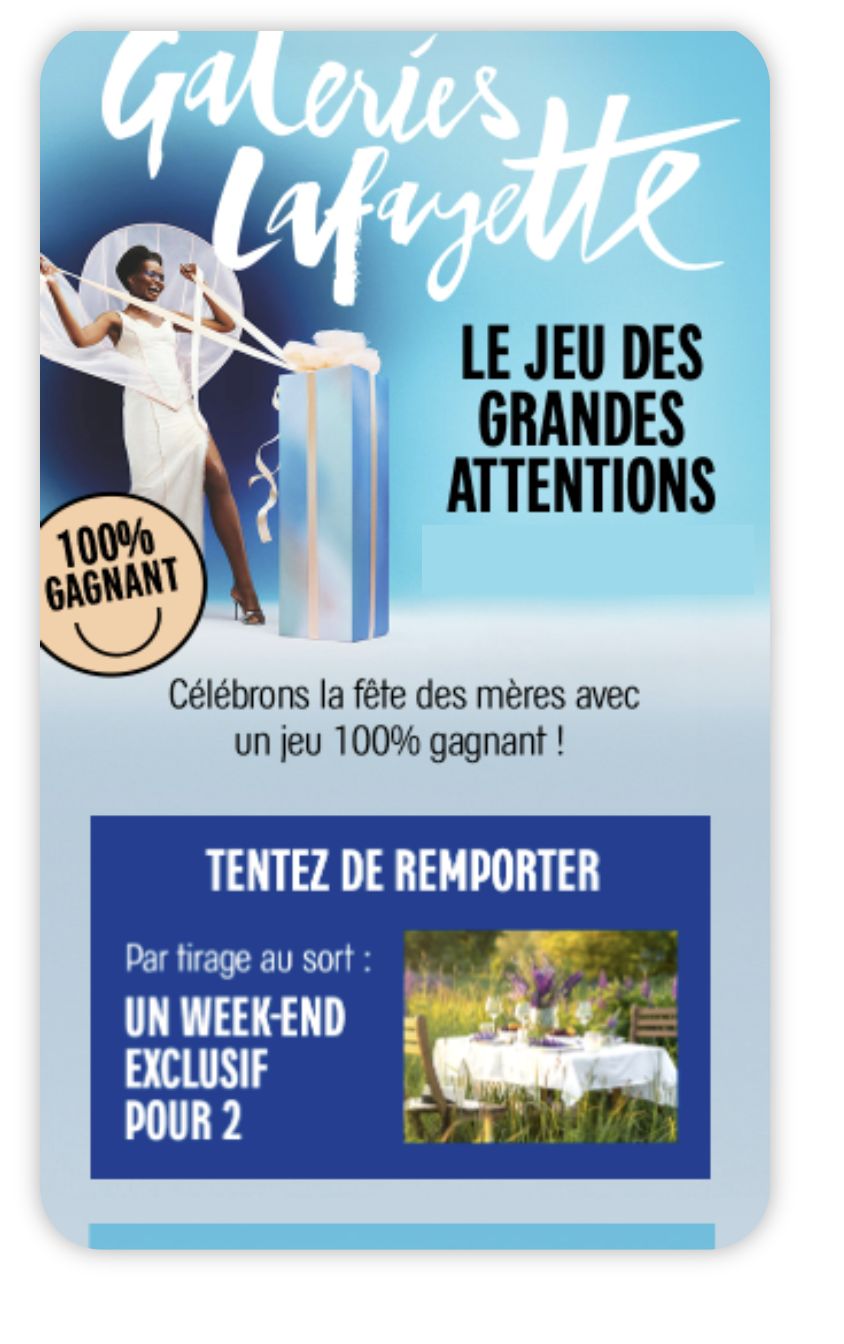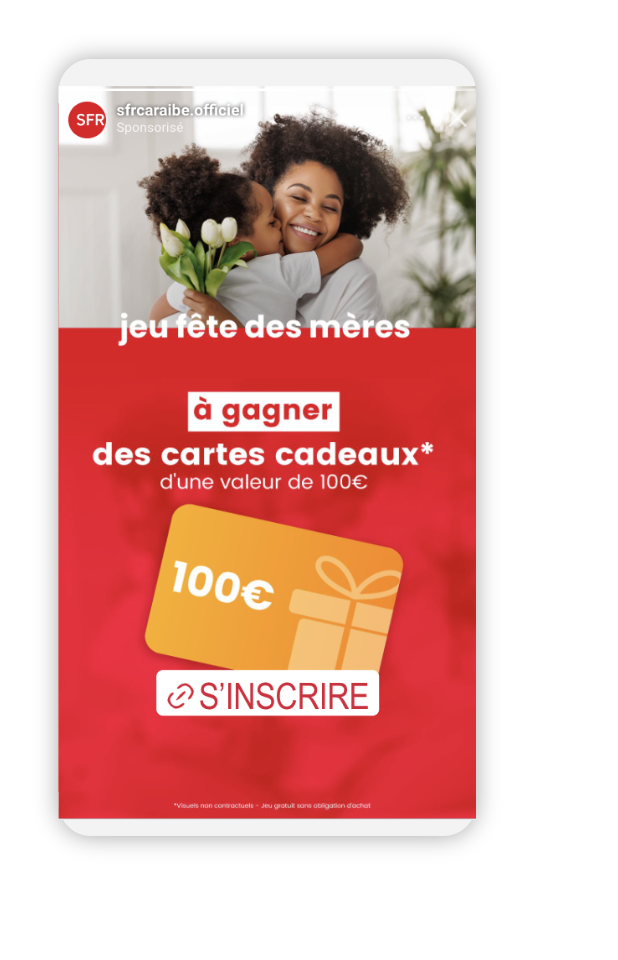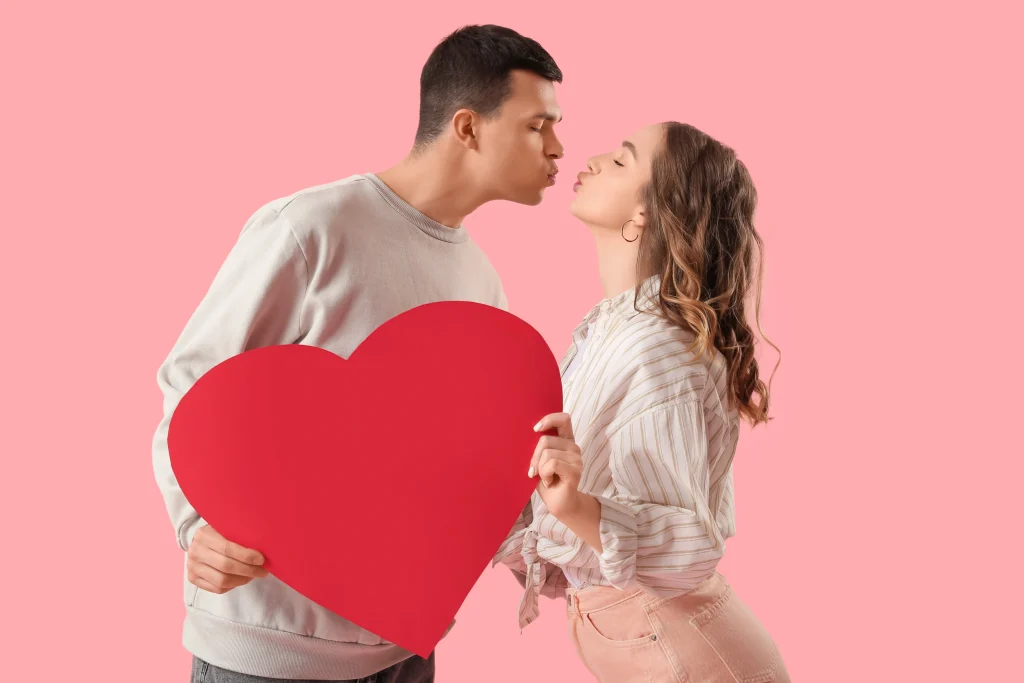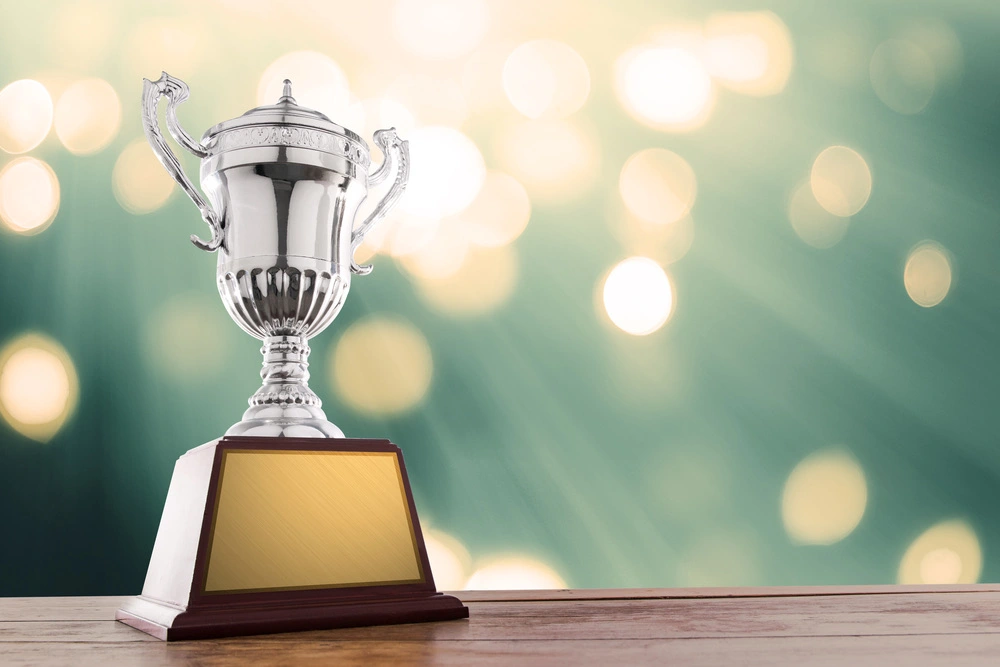
Gamification, the driving force behind successful marketing campaigns
Gamification marketing means creating interactive experiences to capture the attention of audiences, collect data and activate it.
Today, brands are seeking innovative marketing solutions that can address new challenges, especially in a context where advertising needs to reinvent itself (end of third-party cookies). Gamification is one of the tools available to marketing teams to communicate differently.
Let’s find out in more detail how gamification can become the driving force behind the success of your next marketing campaigns.
What exactly is gamification marketing
This technique involves integrating game elements into an overall marketing strategy, with a view to increasing consumer engagement and boosting sales. Brands create interactive and playful experiences for their customers. By interacting with the content, they remember them more easily.
To understand gamification in very concrete terms, let’s take the example of a game. Let’s imagine an advertisement for a pen. In a traditional advertisement, the brand simply displays a photo of the pen. The pen is highlighted by a colorful and attractive design. In a gamified ad, the pen invites web users to play a game of tic-tac-toe. By clicking on a button, they are immersed in an interactive experience with the product. If they succeed in the game, they can win a discount voucher to buy the product.
There are many different competition game mechanics. There are gauges, scores, league tables, instant wins, countdowns, scratch-offs, casino games, quizzes and polls, and so on. These fun and creative animations can be adapted ad infinitum according to the objectives of the brands and the knowledge of their audience.
We will now look at the benefits of gamification for advertising strategies.
The 4 benefits of marketing gamification
Catch the attention and getting to be known
The first challenge for brands is to stand out from the competition. The aim is to increase visibility and brand awareness, attract new customers, introduce a new product, etc.
With online games and challenges integrated into the advertising device, visitors pay much more attention to the message. A customer who has a fun and enjoyable experience on a site will remember the brand longer. This can go far as to create an emotional bond, influencing the decision to buy.
As far as events are concerned (whether on social networks, a website or a newsletter), recurring high points such as Christmas, Easter, etc, help to reach a wide audience. Audiences are brought together in a festive atmosphere that encourages play. The brand can also create its own highlights (brand anniversary, organised event, trade fair, etc.).
Engaging audiences
It’s undeniable that audience engagement is greater when content is interactive. The reason is simple. Games offer a fun action that attracts the visitor’s attention before asking them for specific information of action. For example, giving their contact details, installing an app, or giving their opinion in a survey. This is the first step in establishing a brand-consumer relationship.
Interactive games can be used to encourage users to explore a company’s products and services, for mechanics that highlight the features or benefits of the products (quizzes, shopping lists, etc.).
They are also engaging in terms of the time spent with the brand, thanks to mechanisms that capitalise on the spirit of competition (score-based games, gauges, etc.). Finally, the appeal of a gift or promotion revealed at the end of the campaign can generate massive number of new leads.
In the example below, Leroy Merlin launched an operation to survey its audiences about their ranges, while recruiting new leads. In total, over 3.5 million clicks and opinions were collected.
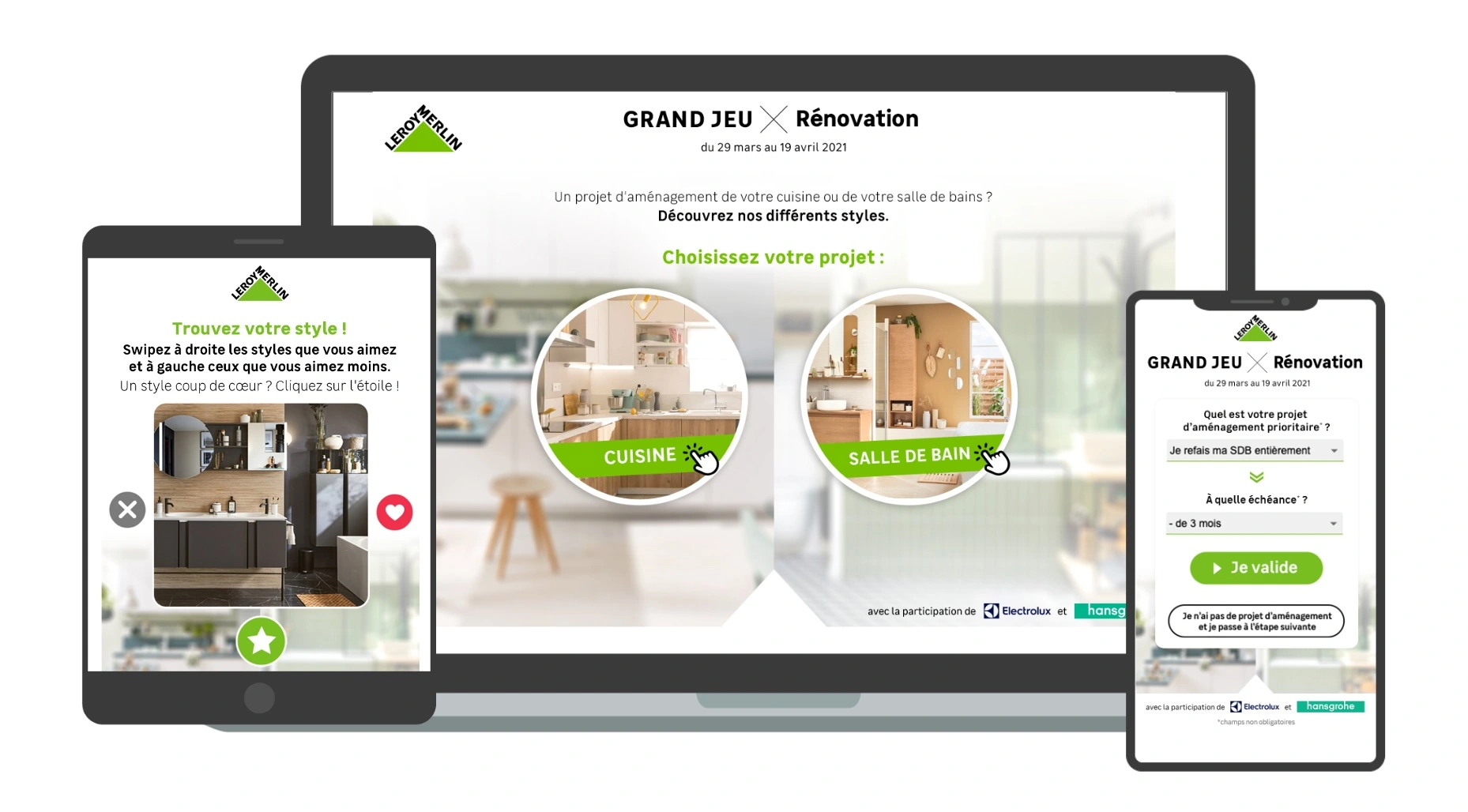
Boost conversions
Interactive games are also an excellent way of boosting conversions, through the distribution of attractive discounts. These prizes are offered as part of a 100% winning scheme, where each participant automatically receives a voucher. Brands can also offer gift vouchers in exchange for proof of purchase. This encourages customers to buy more products by playing the campaign again.
As well as driving participants to the website for immediate consumption, these game campaigns can also support a period of in-store promotions. Consumers are encouraged to buy more products to increase their chances of winning the reward.
Finally, thanks to the installation of conversion pixels, it is possible to directly measure the sales generated by a game campaign. This feature is particularly useful for brands that want to closely monitor the results of their campaign and evaluate its effectiveness.
Collecting and activating data
By using interactive games as part of their marketing strategy, brands can collect data on consumer preferences and buying habits. This data on existing and potential customers enriches their CRM database. This in-depth knowledge of customers enable brands to personalise their communications. Loyalty programs, for example, offer rewards for repeat purchases. This encourages customers to remain loyal to the brand and buy more products.
In addition, the data collected can also help brands to recruit new leads and acquire new customers. The information collected via interactive games can be used to create more effective and better targeted advertising campaigns. Brands can also use this data to create programmatic lookalike audiences to expand their base of qualified prospects.
By using this information to improve their product and service offering, brands can increase their conversion rate and sales while strengthening their relationship with consumers.
Conclusion
In short, gamification is a powerful marketing strategy for stimulating customer engagement, generating leads and collecting qualified data. Brands that choose to integrate interactive games into their marketing strategy enjoy a significant competitive advantage in the marketplace.
A tool like Adictiz, for example, enables you to create and distribute these interactive formats, give them media coverage, manage data collection and integration into your CRM, and finally activate the data. Relying on a comprehensive platform for launching gamified campaigns means making the choice of performance, with formats tailored to each message.


